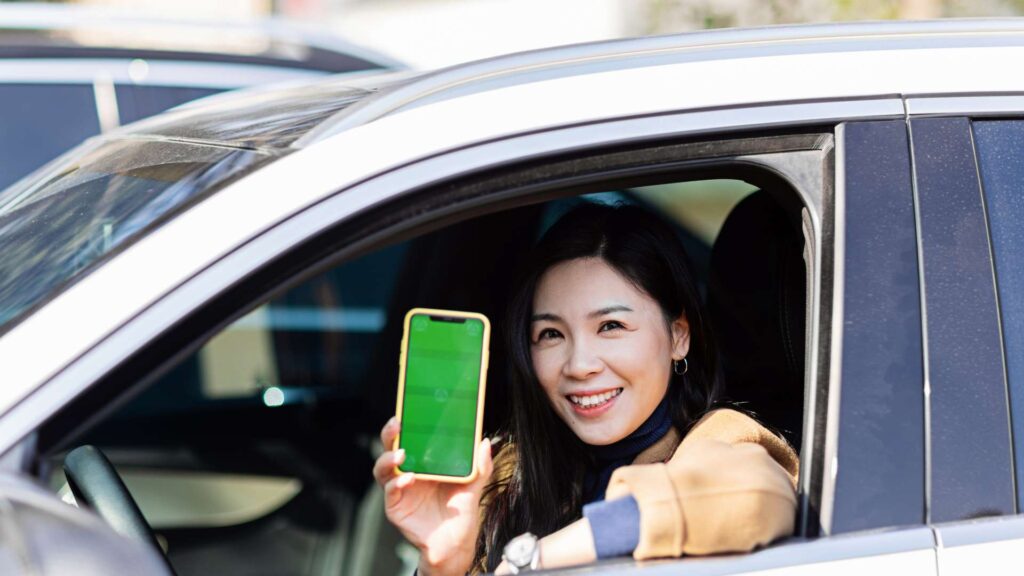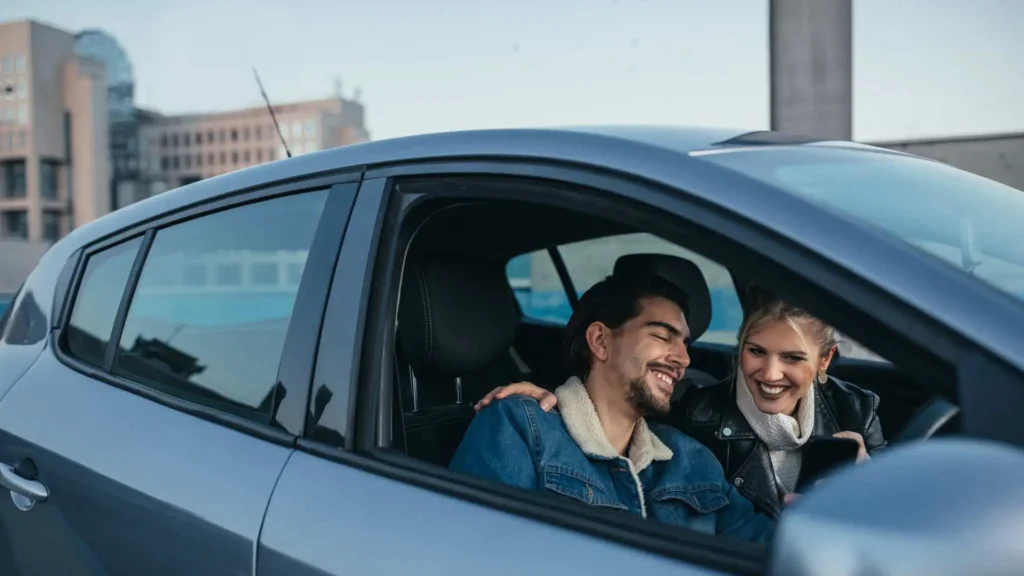Table of Contents
Side hustles have become a cornerstone of the American economy. Millions supplement their income by driving for ride-sharing and delivery platforms like Uber, Lyft, DoorDash, and Instacart. For some, it is a way to cover bills or pay off debt. For others, it has turned into a full-time occupation. While the gig economy has opened doors to flexible income, it has also created new questions—especially around insurance.
Many side-hustle drivers assume their personal auto policy will protect them on the road, only to discover that their claim is denied after an accident. Others rely solely on the limited coverage provided by platforms like Uber or Lyft, not realizing that important gaps exist. This guide is designed to give side-hustle drivers a beginner-friendly yet thorough understanding of ride-sharing insurance. Or, ride-sharing insurance for side-hustle drivers: a beginner’s guide. Let’s get started.
Why Regular Car Insurance Isn’t Enough
Personal Auto Policies Exclude Commercial Use
When you purchase a personal auto policy, the assumption is that you will use your car for personal activities—commuting, errands, road trips. These policies are not meant to cover driving for profit. Most standard policies explicitly exclude coverage for “livery services” or “driving for hire.”
If you drive for Uber, Lyft, or a delivery service and are involved in an accident, your insurer may deny your claim. Even worse, they may cancel your policy once they find out you were using the vehicle for commercial purposes without proper coverage.
The Risk of Gaps
Insurance companies view ride-sharing as riskier than personal driving because it involves more time on the road, frequent pick-ups and drop-offs, and passengers or goods in transit. The result is a gray area: if you only have personal auto insurance, there are periods when you are essentially uninsured.
For example:
- If your app is on and you are waiting for a ride, many insurers will not cover you.
- If you are en route to pick up a passenger, your personal policy does not apply.
- Once a passenger is in the car, only limited liability coverage from the platform may kick in.
Without proper ride-sharing insurance, one accident could wipe out not just your car but also your financial stability.
How Ride-Sharing Insurance Works
The Three Periods of Coverage
To understand ride-sharing insurance, you must first know how insurers divide your driving activity into three distinct periods:
- Period 1: App On, Waiting for a Request
- You are logged into Uber, Lyft, or DoorDash but have not yet accepted a ride or delivery.
- Most personal auto insurers exclude coverage during this stage.
- Uber and Lyft may provide minimal liability coverage, but not comprehensive or collision.
- Period 2: Ride Accepted, En Route to Passenger or Delivery
- You have accepted a ride request or delivery job and are ready to pick up the passenger or goods.
- Platform-provided coverage increases, but personal auto policies still exclude this activity.
- Period 3: Passenger in Car or Delivery in Progress
- You are actively transporting a passenger or a delivery.
- Uber and Lyft typically provide $1 million liability coverage during this period, along with limited collision and comprehensive if you already carry these on your personal policy.
- Delivery platforms vary widely, with some offering little more than liability.
What Uber and Lyft Provide by Default
Uber and Lyft offer some insurance to protect both drivers and passengers, but it is important to know the limitations:
- Period 1: Liability coverage only, often at state minimum levels. No collision or comprehensive.
- Period 2: Increased liability coverage, with contingent collision and comprehensive if the driver has those on their personal policy. Deductibles apply.
- Period 3: $1 million liability coverage while passengers are in the car. Collision and comprehensive coverage are available with deductibles, but only if you carry those under your personal auto policy.
Delivery Platforms and Their Coverage
Delivery platforms vary significantly. DoorDash and Instacart, for example, provide some liability coverage while deliveries are in progress, but do not cover your car itself. If your car is damaged in an accident, you could be left paying out of pocket unless you have additional ride-sharing or commercial coverage.
Ride-Sharing Endorsements and Add-On Policies
What an Endorsement Is
A ride-sharing endorsement is an add-on to your existing personal auto policy. It extends coverage to periods when you are logged into a ride-sharing or delivery app but not actively transporting passengers. In other words, it helps fill the gap in Period 1—when waiting for a request.
States and Carriers That Offer It
Not all states require insurers to offer ride-sharing endorsements, and availability varies by carrier. Larger insurers like State Farm, Progressive, and Farmers offer ride-sharing endorsements in many states, but not all of them. It is essential to check availability in your area.
When an Endorsement Isn’t Enough
Endorsements are ideal for part-time drivers who only work occasionally. However, an endorsement may not be enough if you drive full-time or work significant hours. In such cases, you may need a full commercial auto policy.
Full Commercial Auto Insurance for Gig Drivers
Who Needs It?
Commercial auto insurance is designed for vehicles used primarily for business. Side-hustle drivers may need this coverage if:
- They drive full-time for Uber, Lyft, or delivery services.
- Their annual mileage far exceeds typical personal use.
- They transport passengers and goods regularly as their main source of income.

What It Covers
Commercial auto insurance typically includes:
- Liability coverage for injuries or property damage you cause.
- Collision coverage for damage to your own vehicle.
- Comprehensive coverage for non-collision incidents like theft or fire.
- Higher coverage limits than personal or endorsement policies.
Cost Considerations
Commercial auto policies are more expensive than endorsements but provide broader protection. Premiums vary depending on your driving record, vehicle, location, and platform, but drivers should expect to pay significantly more for this level of coverage. The cost is often justified for those who rely on ride-sharing as a primary income source.
How Much Does Ride-Sharing Insurance Cost?
Ride-Share Endorsements
Ride-sharing endorsements typically add $20 to $40 per month to a personal auto policy. This small increase can provide peace of mind by covering one of the drivers’ most vulnerable periods.
Commercial Auto Policies
Commercial auto policies cost more, ranging from $1,200 to $3,500 annually, depending on coverage levels and driving activity. The higher cost reflects the greater risk associated with commercial driving.
Factors That Influence Cost
Several factors influence how much you will pay for ride-sharing insurance:
- Driving history: Accidents or tickets will raise rates.
- Mileage: More time on the road means higher premiums.
- Location: Urban areas with more accidents typically cost more.
- Platform: Different platforms provide varying levels of coverage, which affects how much extra you need.
Common Coverage Gaps for Side-Hustle Drivers
- App-On but No Passenger: During Period 1, you may only have minimal liability coverage. No collision or comprehensive applies unless you have an endorsement.
- Collision Coverage with Deductibles: Even when Uber or Lyft provides collision coverage, deductibles can be high, sometimes $2,500.
- Delivery Drivers Left Exposed: Food and package delivery platforms often provide less coverage than ride-share companies.
- Misunderstanding When Coverage Applies: Many drivers assume they are fully covered as long as the app is on, which is untrue.
How to Choose the Right Ride-Sharing Insurance
Assess Your Driving Habits
Start by evaluating how often you drive. An endorsement may be enough if you drive a few hours per week. A commercial auto policy may be the better choice if you drive full-time.
Compare Insurers That Specialize in Gig Coverage
Some insurers are more ride-share friendly than others. Compare policies across multiple providers to see which one best matches your needs.
Ask the Right Questions
When shopping for policies, ask:
- What coverage do I have while waiting for a request?
- What deductibles apply if I am in an accident?
- Does the policy cover rental cars or temporary replacements if my car is out of service?
Consider Using Tools Like Beem
Beem, an AI-powered smart wallet app, simplifies the process of comparing ride-sharing insurance options. By analyzing your driving habits, location, and coverage needs, Beem helps identify gaps and shows you the best value for your money.
Mistakes Side-Hustle Drivers Make About Insurance
- Assuming Uber or Lyft’s Policy Is Enough: Platform coverage has limitations, especially when waiting for requests.
- Not Disclosing Gig Driving to Insurer: Hiding ride-share activity can lead to denied claims or canceled policies.
- Skipping Endorsements to Save Money: The short-term savings are not worth the financial risks.
- Forgetting Coverage Varies by State: Rules differ, and what works in California may not apply in Texas.
Conclusion
Ride-sharing and delivery driving can be valuable ways to earn extra money or replace a full-time job. However, the financial risks are real if you do not have the right insurance. Personal auto policies do not cover commercial driving, and platform-provided coverage has significant limitations. The best solution is to evaluate your driving habits, compare options, and invest in a ride-sharing endorsement or commercial auto policy.
While the added cost may seem like a burden, it is small compared to the potential losses from an uncovered accident. Beem, the personal finance app trusted by over 5 million Americans, provides a convenient platform for comparing car insurance quotes and discovering affordable rates tailored to individual needs. With Beem, you can take the first step towards securing reliable coverage today. Download the app here.
FAQs Ride-Sharing Insurance for Side-Hustle Drivers
Do I need ride-sharing insurance if Uber and Lyft provide coverage?
Yes. While Uber and Lyft provide some insurance, they do not cover every situation. For example, you may have minimal liability coverage when your app is on while waiting for a ride. Without an endorsement or commercial policy, you remain at risk.
What’s the difference between an endorsement and a commercial policy?
An endorsement is an add-on to your auto policy that covers part-time ride-sharing activities. A commercial auto policy is a full business policy designed for vehicles for commercial purposes.
Does delivery driving require special coverage, too?
Yes. Delivery platforms like DoorDash or Instacart typically offer less coverage than ride-sharing platforms. You may need a ride-sharing endorsement or commercial policy to fill the gaps.
How much more does ride-sharing insurance cost?
Endorsements cost about $20–$40 per month, and full commercial policies range from $1,200 to $3,500 annually. The exact cost depends on your driving history, mileage, and location.
How can Beem help me find the best ride-sharing coverage?
Beem compares quotes across multiple insurers, identifies coverage gaps, and recommends policies tailored to your needs. It simplifies the process and ensures you are not overpaying.
















































